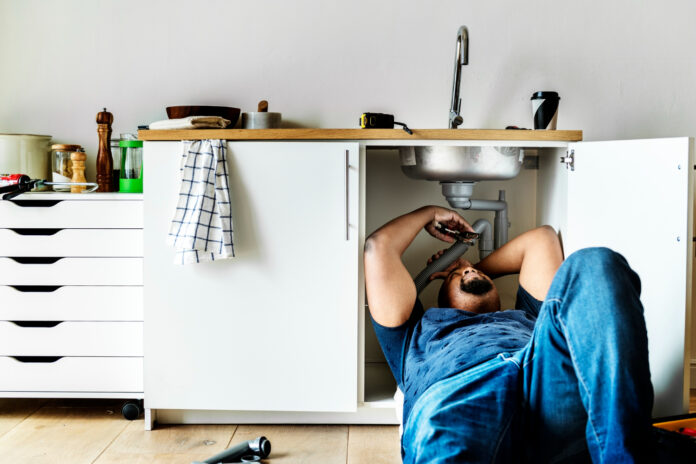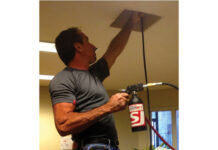Regularly inspecting your home’s plumbing is an important part of being a responsible homeowner.
If this article caught your interest, you’d likely appreciate further reading on repairing underground PVC pipes without the need for digging.
By following this underground plumbing inspection guide, you can help ensure that your pipes are in good condition and identify any potential problems before they become too serious. Remember to also consult a professional if you have any concerns or questions about your home’s plumbing system.
Continue reading to learn more about underground plumbing inspections.
Looking for a professional plumbing service to perform an underground plumbing inspection?
You can always rely on the talented team at Clover Services for anything plumbing-related.
Plumbing underground inspection checklist — An in-depth guide for homeowners
Here’s an in-depth checklist for underground plumbing inspections:
- Check for leaks in the faucets, sinks, and toilets
- Inspect the water pressure by turning on all the faucets at once
- Test the drainage by pouring a bucket of water into each sink and flushing each toilet
- Look for cracks or damage to the pipes, especially around joints
- Make sure there is no standing water anywhere in the basement or crawlspace
#1 — Check for leaks in the faucets, sinks, and toilets in your home
One of the most important aspects of owning a home is keeping the plumbing in good working order. Although we rely on pipes and fixtures to deliver clean water and remove waste, we often take them for granted—that is, until something goes wrong.
When a pipe bursts or a drain becomes clogged, it can be a major headache (and expense). That’s why it’s important to have regular inspection and maintenance done on your home’s plumbing system.
During an underground plumbing inspection, a qualified technician will check for leaks in the faucets, sinks, and toilets. They will also look for any signs of corrosion or damage to the pipes. If they find any issues, they will make the necessary repairs. In some cases, they may recommend replacing older pipes with new ones. By having regular inspections done, you can catch problems early and avoid costly repairs down the road.
#2 — Inspect the strength of your water pressure by turning on all the faucets at once
To perform an underground plumbing inspection, you’ll need to turn on all your home’s faucets at once and check the water pressure.
If the pressure is low, it could be a sign that one of your pipes is leaking. You should also be on the lookout for any wet spots in your yard, as these could indicate a broken pipe.
#3 — Test the drainage by pouring water into each sink and flushing the toilets
Homeowners rarely think about their plumbing systems until an unexpected issues pops up. But in order to prevent issues like flooding or a clogged sewer line, it’s important to have your plumbing regularly inspected. An underground plumbing inspection involves testing the drainage system to ensure that water is flowing freely through the pipes. However, if it is too late and you already know that you might have problems with sewer lines, then you should contact professionals for the right inspection and sewer line repairs.
This can be done by pouring a bucket of water into each sink and flushing each toilet. If the water level in the bowl doesn’t drop quickly, there could be a blockage in the pipe. In addition, the inspector will check for any leaks or cracks in the pipes. These can be repaired quickly to avoid further damage. With regular inspections, you can rest assured that your plumbing is in good working order.
#4 — Look for cracks or damage to the pipes, especially around joints
An inspection typically involves a thorough examination of all accessible plumbing, both inside and outside the home. The inspector will look for signs of leaks, blockages, or other damage to the pipes, as well as any indications that the system is not up to code.
In some cases, the inspector may also recommend that a camera be inserted into the pipes to get a better view of their condition. While an underground plumbing inspection may require some extra effort, it can ultimately save homeowners a lot of time and money.
#5 — Make sure there is no standing water anywhere in the basement or crawlspace
Homeowners should make sure there is no standing water anywhere in the basement or crawlspace, as this can indicate a problem with the home’s drainage system. Any signs of water damage should be investigated as well, as this can indicate a hidden leak.
Taking these precautions will help ensure that the home’s underground plumbing is in good condition and will minimize the risk of expensive repairs down the road.
Underground plumbing inspection checklist for homeowners — Conclusion
Homeowners should inspect their underground plumbing system on a yearly basis to ensure that it’s in good condition.
By following this simple checklist, homeowners can identify any potential problems before they become costly and difficult to fix.
If you have any questions, comments or concerns about this inspection checklist or need help performing any type of plumbing inspection, please contact a professional HVAC service.











